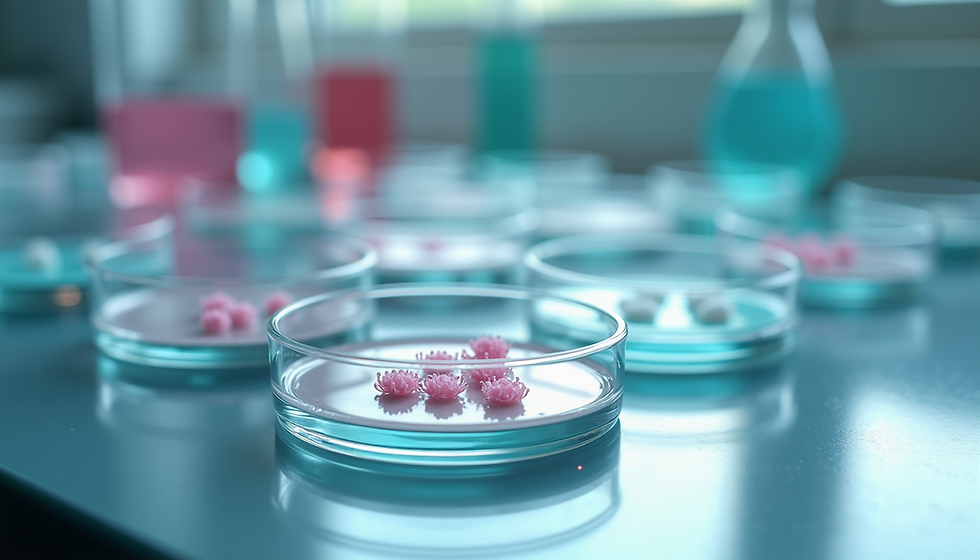Understanding Strokes: A Personal Journey Through Neurology and Organic Intelligence
- Franco Arteseros
- Apr 17
- 4 min read

As I explore the fascinating world of human anatomy, especially the brain, one topic stands out: strokes. This sudden and often debilitating event can change lives in an instant. In this post, I will delve into the nature of strokes, their causes, and the connection to organic intelligence and brain health.
What is a Stroke?
A stroke occurs when there is an unexpected disruption in the brain's blood supply. This interruption can cause severe brain damage, as affected areas lose oxygen and vital nutrients. There are two main types of strokes:

Ischemic Stroke: This is the most common type, accounting for around 87% of all strokes. It occurs when blood clots block blood vessels, cutting off circulation.
Hemorrhagic Stroke: This happens when a blood vessel in the brain bursts, leading to bleeding in surrounding tissues. Hemorrhagic strokes can be caused by conditions such as high blood pressure or aneurysms.
Each stroke is not just a sudden incident; it’s a complex interaction of biological processes that can drastically change an individual’s life.
How Does a Stroke Happen?
The mechanics behind strokes are complex. In ischemic strokes, clots obstruct arteries that supply blood to the brain, leading to a shortage of oxygen. Risk factors that can contribute to this include:

High blood pressure: Approximately 47% of adults in the U.S. have high blood pressure, a leading risk factor for strokes.
Diabetes: This condition doubles the risk of stroke.
High cholesterol: About 38% of Americans have high cholesterol, which can lead to artery blockages.
Conversely, hemorrhagic strokes arise from weakened blood vessels due to conditions like hypertension or aneurysms. When a vessel breaks, blood flows into nearby tissues, causing increased pressure and damage.

Understanding how blood flow can be disrupted is key for prevention and treatment strategies in neurology.
Why Does a Stroke Happen?
Several lifestyle factors and genetic predispositions significantly increase the likelihood of having a stroke. Poor lifestyle choices, such as smoking and an unhealthy diet, contribute to cardiovascular diseases, which in turn raise the risk of strokes. Here are some statistics to consider:

Smoking: Smokers are twice as likely to have a stroke compared to non-smokers.
Diets high in saturated fats increase cholesterol levels, which can lead to arterial blockages.
Genetics also plays a crucial role. A family history of stroke can increase your risk significantly. For example, individuals with a parent or sibling who has had a stroke are at a higher risk.
Many of the conditions leading to strokes can be managed effectively through lifestyle changes. Improved diet, regular exercise, and quitting smoking can substantially lower risks.
The Role of Organic Intelligence
The idea of organic intelligence speaks to the brain's remarkable ability to adapt and respond to its environment. Neurons are dynamic; they can grow, adapt, and retrain over time through a process called neuroplasticity.

When a stroke occurs, this organic intelligence is tested. The brain can reorganize itself to compensate for damaged areas, revealing its capacity for recovery. For instance, rehabilitation through targeted exercises, cognitive training, and social interactions can significantly enhance recovery. Studies show that early intervention can increase the chances of regaining lost functions by up to 30%.

The Importance of Awareness and Prevention
Raising awareness about stroke symptoms is crucial for timely treatment. The acronym FAST helps in recognizing strokes effectively:

Face drooping: One side of the face may droop or feel numb.
Arm weakness: One arm may drift downward when both are raised.
Speech difficulties: Speech may slur or be difficult to understand.
Time to call emergency services: If any of these signs are observed, call for help immediately.
Education about strokes also emphasizes understanding risk factors and taking preventive steps. Leading a heart-healthy lifestyle that includes:
A balanced diet rich in fruits, vegetables, and whole grains
Regular physical activity, aiming for at least 150 minutes of moderate exercise weekly
Stress management techniques, such as mindfulness or yoga
Healthcare professionals play a vital role in educating patients and advocating for proactive health management.
My Personal Reflections: The Journey through Neurology
As I further explore neurology and strokes, I find my connection to this topic deepening. Understanding strokes illuminates the importance of neuron health and the brain's impressive capabilities.
Witnessing the recovery stories of stroke survivors serves as an inspiration. Each experience reveals courage and resilience, underscoring the need for strong support systems throughout recovery.

Final Thoughts
Strokes are profound medical events that highlight the fragility and resilience of the human body. By understanding what causes strokes, how they develop, and the potential for recovery through the lens of organic intelligence, we can foster hope and promote awareness.

By taking careful steps toward prevention and advocating for education, we can enhance personal health and build a supportive community for everyone affected by stroke. Join me in keeping this crucial conversation about health and neuroscience going, as we strive for a brighter, healthier future for all.

FRANCO ARTESEROS...








"Wow, what an inspiring and heartfelt post! Your personal story about stroke recovery truly highlights the resilience of the human spirit. It's incredible to see how you’ve navigated such challenges and emerged stronger. Your insights not only educate but also offer hope to others who may be facing similar journeys. Thank you for sharing your experience and reminding us all of the power of perseverance and the importance of support in recovery. Keep shining your light and inspiring others! 🌟"
😊